Luxury Brand Imitation
Brand imitation refers to copying attributes like design, logo, and shape of a renowned product. Doss and Robinson (2013, p. 427) define brand imitation as “a product that borrows or copies some special attributes of a famous or leading product such as name, shape, or color”. According to Doss and Robinson (2013), the act amounts to a breach of the core value of the original product. Different states have laws that prohibit imitation of luxury brands. Brand imitation deprives the original product designers of the right to reap benefits from their innovation. Additionally, it leads to companies losing significant market share. Mostly, customers opt to purchase the imitation as it goes at a low price. Today, brand imitation poses a major threat to branded companies.
The reason for focusing on brand imitation is the danger it poses to the growth of companies and innovation. As per Doss and Robinson (2013), brand imitation is a great crime in the 21st century. Currently, imitated products account for at least seven percent of the global market. The vice is highly concentrated in the luxury product sector. As companies continue to invest in the development of prestigious products, counterfeiters are increasingly targeting them. Growth in technology has made it easy for people to imitate brands. Geiger-Oneto et al. (2013) allege that it is hard for a person to notice a counterfeit brand. One requires paying attention to the unique features of the original product. Below is an example of a counterfeit T-shirt.
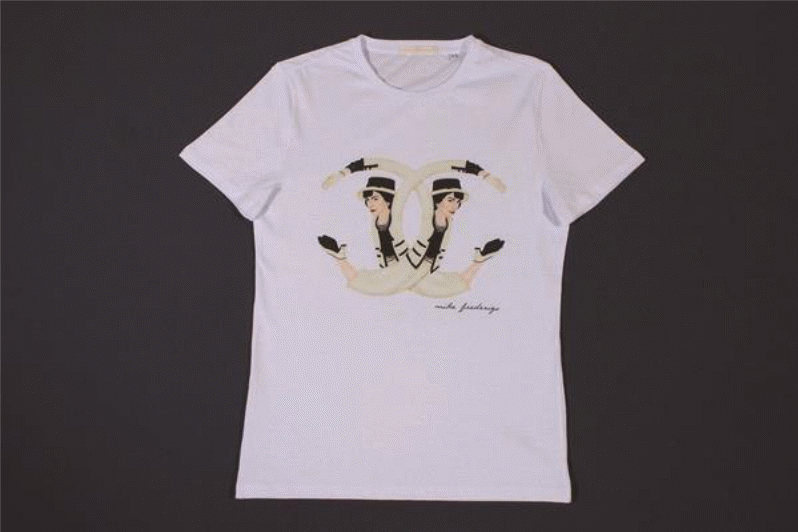
According to Geiger-Oneto et al. (2013), imitators can target all kinds of luxury brands. Nevertheless, there are areas where imitation is particularly practical. Mostly, they target sectors with limited legal protection. Geiger-Oneto et al. (2013, p. 361) claim that they target sectors where “complementary assets cannot be mustered to protect innovators”. The industries that are highly prone to imitation include fashion and apparel companies. This report will focus mainly on the apparel industry. The study will concentrate on the imitation of branded T-shirts and handbags. Limited legal protection of the branded handbags and T-shirts makes it easy for people to imitate these brands. Besides, technology has made it possible for counterfeiters to come up with diverse appealing designs for handbags and apparel. Below are images of different varieties of handbags from My Other Bag brand, which are replicas of Louis Vuitton handbag brands.
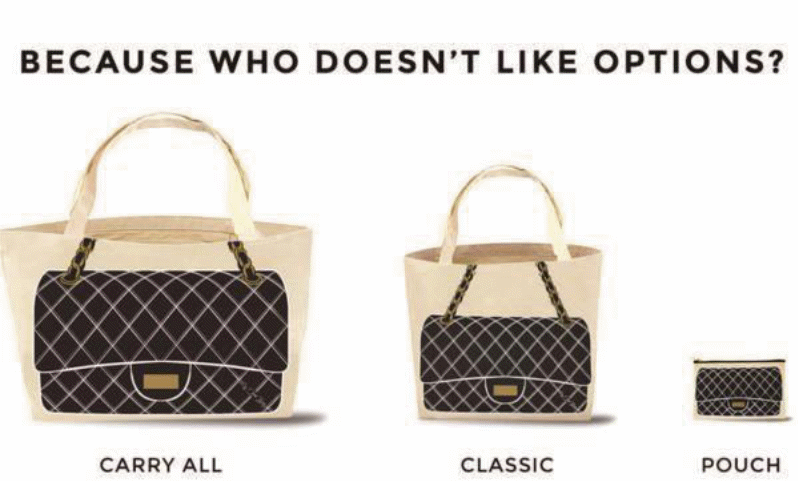
Popularity of Imitations
To combat imitation, it is imperative to understand the factors that contribute to customers purchasing counterfeit goods. Scholars have conducted significant research to determine the factors that contribute to the imitation of luxury brands (Lee, Chen & Wang 2015). A majority of people who do not respect the law are likely to purchase counterfeit goods. Besides, customers with prejudice against big companies have a high propensity for buying imitated brands. The customers argue that the companies sell original products at exaggerated prices. According to Triandewi and Tjiptono (2013), individuals who wish to assert their status but do not have money to purchase authentic brands can purchase counterfeit products. Curiosity amid customers is another factor that leads to the popularity of imitated brands. The desire to experiment with certain brands leads to customers purchasing counterfeit products. Today, every woman yearns to own a handbag from Louis Vuitton brand. However, not every woman can afford to purchase the brand. As a result, some customers purchase counterfeit handbags due to the desire to experiment with the brand. Below is an image of handbags from My Other Bag brand that use designs from the Louis Vuitton brand.
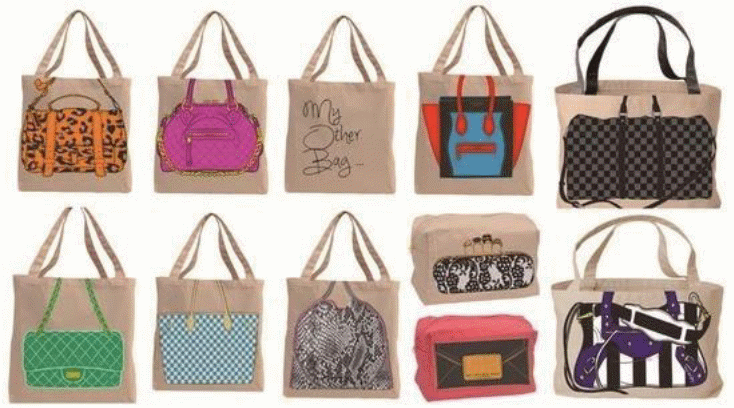
Numerous factors have contributed to the popularity of imitated products. They include celebrity endorsement and low prices (Modi et al. 2014). The apparel industry is fond of using popular personalities to endorse brands. The clothing companies use musicians and actors to advertise their products. Consequently, everyone craves to be associated with the brand. Today, many counterfeit products use celebrity endorsement strategy to win customer loyalty. Modi et al. (2014) argue that the use of celebrity endorsement strategy makes it hard for customers to distinguish counterfeits from the original brands. One of the renowned counterfeit brands is the Homies sweatshirts and vetements. Popular musicians like Kanye West and Rihana wear such apparel. Whenever the celebrities wear products their fans take photos and share them on social media. Counterfeiters take this opportunity to produce identical merchandise. The flashy and audacious designs of the counterfeited products captivate the clients. Eventually, they develop an interest in the products resulting in the popularity of the brands. The figures below represent images of brands worn by renowned celebrities.
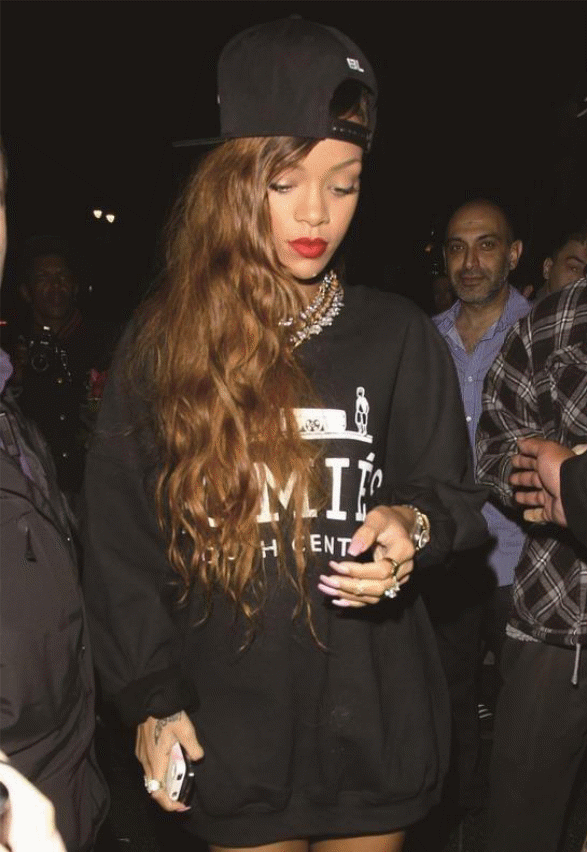
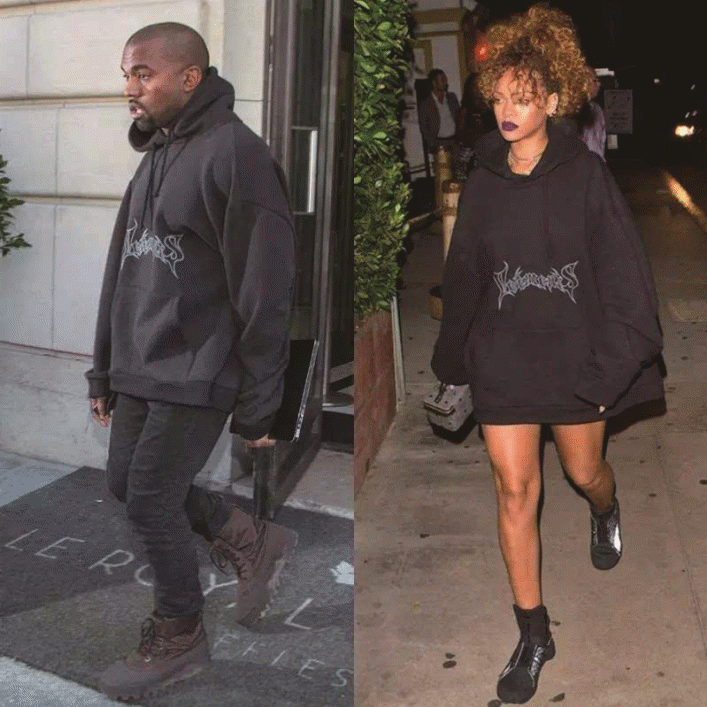
Past studies show that experience with counterfeit brands and stance towards fiscal and hedonic advantages of pirated products influences consumer buying behavior (Pierre 2012). The theory of planned behavior holds that there is a connection between stance, behavioral intent, and behavior (Pierre 2012). Some consumers purchase counterfeit brands due to materialistic minds. Many consumers value owning and displaying luxury products. Thus, they are likely to purchase counterfeit brands if not in a position to own the original products. People feel the same regardless of whether they are wearing authentic or counterfeit luxury brands (Pierre 2012). The more they continue to wear counterfeit brands, the more the products become popular. Today, many people wear counterfeit Louis Vuitton T-shirts due to their popularity. It has become hard for most customers to differentiate the original T-shirt from the imitation. Below is an image of a counterfeit Louis Vuitton T-shirt.
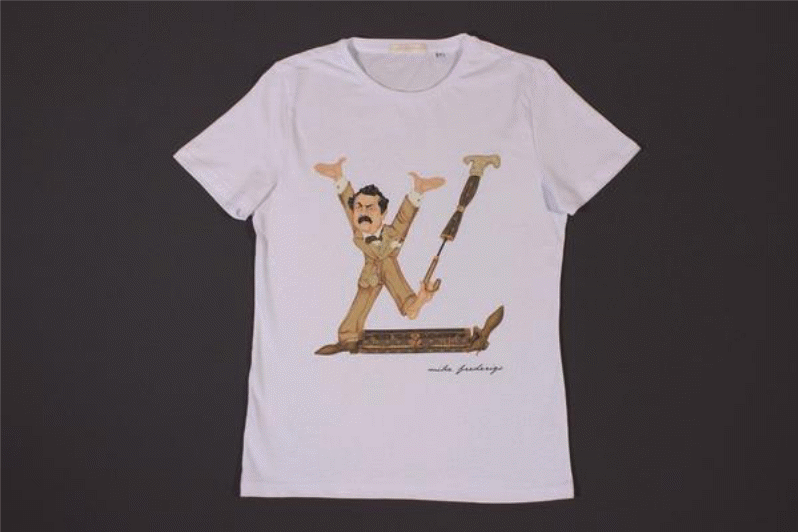
Customers consider the price of a product before opting to purchase. One factor that encourages customers to purchase imitations is their prices. Counterfeit products go at low prices. The study shows that customers who have experience with counterfeit products claim that they are as good as the genuine brands (Pierre 2012). Thus, they do not consider the quality of the brands. It underlines the reason why some customers will always purchase imitated products. The inability of the manufacturers of the branded products to change clients’ opinions about counterfeit goods makes it hard for companies to fight imitation (Pierre 2012). Below is an image of the handbag from My Other Bag, which is an imitation of Louis Vuitton’s handbag. The handbag on the right is a Louis Vuitton brand while the one on the left is its imitation.
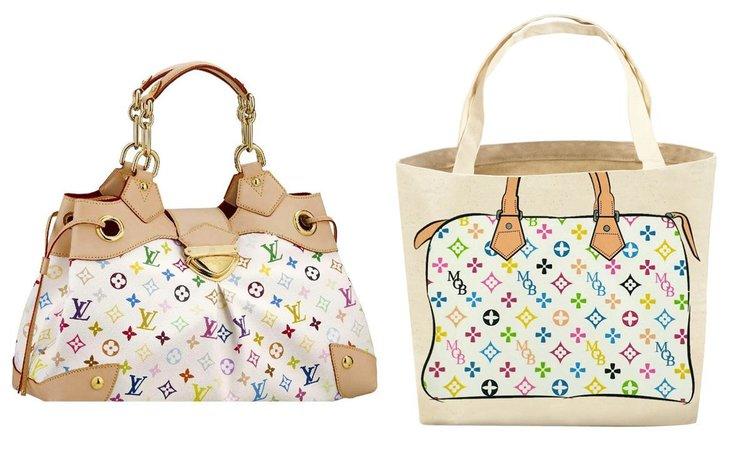
According to Romani, Gistri, and Pace (2012), intellectual property laws are weak regarding the protection of luxury handbags. For a product to qualify as an imitation, it must be proved to be a parody. Unfortunately, counterfeiters know how to design their products in ways that they look genuine. Romani, Gistri, and Pace (2012, p. 818) posit, “Counterfeiters do not require getting a license in relation to trademark uses for purpose of parody”. It underlines the reason Louis Vuitton did not win the case against My Other Bag. The counterfeiters make sure that their products cannot be confused with the original brands. Besides, they are keen not to be liable for trade dilution. The judgment passed in the Louis Vuitton vs. My Other Bag case revealed the degree to which counterfeiters can imitate luxury brands without plagiarising. Lack of stringent laws that protect intellectual property makes it easy for imitators to circumvent legal risks. Today, My Other Bag continues to use Louis Vuitton’s brand to caricature the company’s superior luxury image. Below is an image of My Other Bag tote that was in contention.
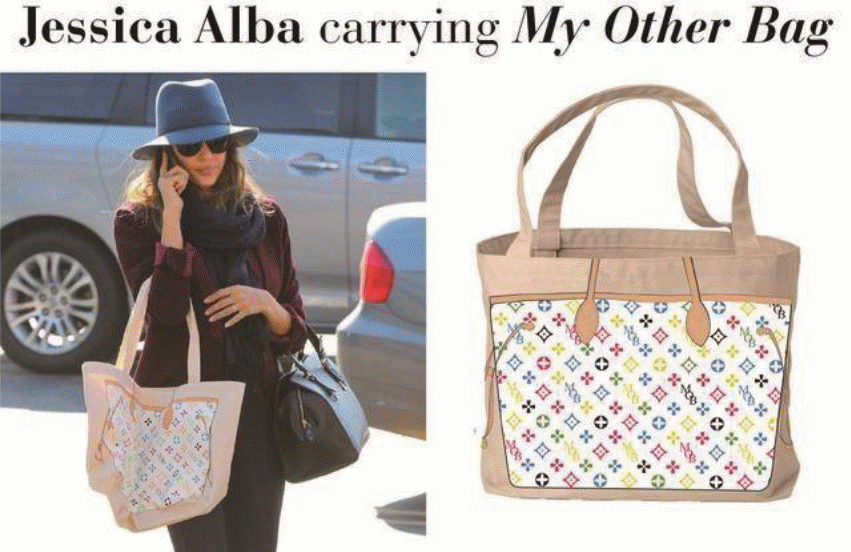
Benefits of Imitation of Luxury Brands
According to Romani, Gistri, and Pace (2012), fashion and apparel companies benefit from imitations in numerous ways. The availability of counterfeit products helps to communicate with high-end clients the desirability of the authentic brand as a component of a rising fashion trend. In other words, at times, imitation of luxury brands serves as an advertising strategy in disguise. Counterfeit products are of low quality. As such, high-end customers can easily detect them. Besides, the availability of imitations in the market signifies that the apparels or handbags they copy are enviable. Romani, Gistri, and Pace (2012, p. 823) hold, “Counterfeits communicate the fact that even those who cannot afford the original brands still want them”. Therefore, they serve as free advertising for branded products. Branded companies do not require using a lot of money to popularise their products. The presence of counterfeit products in the market is adequate to inform high-end clients of the availability of the branded merchandise.
A study in the United States found that the sales of counterfeit luxury brands like handbags and T-shirts do not affect the returns of genuine brands. Consumers can easily distinguish counterfeits from authentic brands. In most cases, clients use counterfeits as trial versions. Triandewi and Tjiptono (2013) hold that at least 40% of clients who purchase counterfeit handbags end up buying the actual brand. Triandewi and Tjiptono (2013, p. 25) argue, “There is reciprocal causation between consumer purchase intention of counterfeit products and consumer intention to buy originals”. The intention to buy counterfeit products has a positive impact on the desire to purchase authentic goods. Conversely, the desire to buy original brands has a negative effect on the intention to purchase counterfeits. The purchase of counterfeit luxury brands arouses the desire to own the original products.
Imitation of luxury brands helps to boost the value of the original products. According to Romani, Gistri, and Pace (2012), products that are not copied are deemed of poor quality. Such products do not trigger consumer demand. The demand for quality products increases with an increase in their presence in the gray channel. Some scholars argue that imitation of luxury brands damage their popularity. On the contrary, it helps to strengthen their attractiveness. Counterfeited brands such as Gucci, Louis Vuitton, Nike, Burberry, and Adidas continue to do well in the global market. The turnover of the counterfeited brands continues to increase signifying growth in their value.
The solution to Imitation of Luxury Brands
Implementation of stringent laws or the creation of anti-counterfeit technology will not help to resolve the problem of imitation of luxury brands like handbags. The fight against counterfeit brands should be directed to the consumers. Doss and Robinson (2013) allege that branded companies should leverage demand and supply in the fight against counterfeits. Organizations should ensure that they provide the products that customers require. Taking away the demand for imitations will go a long way towards curbing the production of counterfeit brands. Doss and Robinson (2013, p. 30) aver, “The lasting quality of a luxury Louis Vuitton Speedy 35 handbag is not even close in style and substance to the phony one purchased after onerous negotiations in disreputable Canal Street basement”. Clients who yearn to be legitimate members of high society are unlikely to purchase counterfeit products. Buying fake handbags would affect their social status. A decrease in the demand for counterfeit products would result in a decline in the production and supply of unoriginal brands.
Conclusion
The imitation of luxury brands is on the rise across the globe. Numerous factors have contributed to the demand for counterfeit brands. They include the endorsement by celebrities, the cost of original brands, and consumer’s perception of the authentic products. The absence of strong intellectual property laws also encourages imitation of luxury brands. Counterfeiters have devised ways to avoid trademark violations and dilution. As a result, they can easily produce brands that parody original products without violating intellectual property laws. Imitation of luxury brands can benefit the original product. It can serve as advertising in disguise. The presence of counterfeit products in the market communicates the appeal of the original brand. Branded companies should leverage demand and supply in the fight against the imitation of luxury products rather than depending on intellectual property laws.
Reference List
Doss, F & Robinson, T 2013, ‘Luxury perceptions: luxury brands vs. counterfeit for young US female consumers’, Journal of Fashion Marketing and Management: An International Journal, vol. 17, no. 4, pp. 424-439.
Geiger-Oneto, S, Gelb, B, Walker, D & Hess, J 2013, ‘”Buying status” by chosing or rejecting luxury brands and their counterfeits’, Journal of the Academy of Marketing Science, vol. 41, no. 3, pp. 357-372.
Lee, H, Chen, W & Wang, C 2015, ‘The role of visual art in enhancing perceived prestige of luxury brand’, Marketing Letters, vol. 26, no. 4, pp. 593-606.
Modi, A, Patel, J, Shukla, Y & Gadhavi, D 2014, ‘Consumers’ attitude and purchase intention towards counterfeit of luxury brands’, International Journal of Business and Emerging Markets, vol. 6, no. 3, pp. 145-162.
Pierre, V 2012, ‘Luxury and counterfeiting: issues, challenges and prospects’, Journal of Brand Management, vol. 19, no. 7, pp. 541-543.
Romani, S, Gistri, G & Pace, S 2012, ‘When counterfeits raise the appeal of luxury brands’, Marketing Letters, vol. 23, no. 3, pp. 807-824.
Triandewi, E & Tjiptono, F 2013, ‘Consumer intention to buy original brands versus counterfeits’, International Journal of Marketing Studies, vol. 5, no. 2, pp. 23-32.